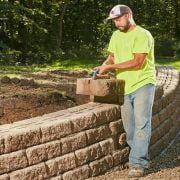Our homes can quickly become the main issue as we age; stairs we can no longer climb, doors that are stiff to open, and kitchens and bathrooms that are no longer safe to use. There are a number of safe housing options specifically built for the older generation, such as bungalows and senior care communities, but these aren’t for everyone.
It can be a difficult choice, whether to move to a new, more efficient house or to adapt the house you’ve stayed in for years, especially if you have raised a family in that home.
So, if it’s the latter option you wish to choose, then there are a number of things you should keep in mind.
Make a Plan
Before you start making any changes to your home, it’s important to sit down and make a plan because it is going to be as easy as getting fence planters. This will help you to work out what needs to be done, how much it will cost, and how long it will take.
Start by making a list of all the areas in your home that need to be changed. Then, for each area, make a note of what needs to be done. For example, you might need to install handrails on the stairs, or widen the doorways in your home.
Once you’ve got a list of all the changes that need to be made, you can start to work out the cost. If you’re hiring a professional to carry out the work, then ask for a quote. If you’re doing the work yourself, then research the cost of the materials you’ll need.
Finally, make a realistic timeline for when you want the work to be completed. Remember to factor in time for planning, shopping for materials, and taking breaks.
Think About the Future
When making changes to your home, it’s important to think about the future as well as the present. For example, if you’re struggling to get up the stairs now, then installing a stairlift will make life a lot easier. But what happens if you can no longer use your legs in the future? In this case, you might want to consider installing a platform lift, which can be used both now and in the future.
Similarly, you might want to think about looking at the best adjustable beds, as these can be raised and lowered as your needs change. And if you’re worried about falling, then installing handrails in the bathroom and around the house can give you the support you need, both now and in the future.
It’s also important to think about how your needs might change in the future. For example, if you’re starting to experience problems with your vision, then installing brighter light bulbs or higher contrast paint colors can make a big difference. And if you’re finding it difficult to hear the doorbell, then getting a loud doorbell or installing a visual doorbell might be a better solution.
Enlist Professional Help
If you’re not sure where to start, or you need help with the more technical aspects of the job, then enlisting professional help is a good idea. An occupational therapist can help you assess your needs and make recommendations on how to change your home to better suit you.
A builder or handyman can then help you to implement these changes, such as installing handrails, widening doorways, or building ramps. Although it might cost a little extra to hire a professional to carry out the jobs, this will ensure that they are done correctly and to a high standard.
Some of the areas that a builder or handyman can help with include:
- Installing handrails
- Widening doorways
- Building ramps
- Installing easy-to-use door handles
- Raising electrical sockets
- Lowering light switches
- Fitting grab rails in the bathroom
Start Small
Don’t try and do everything at once, as this will be both overwhelming and expensive. Start with the most pressing issues and work your way down the list. For example, if you can no longer use the stairs, then install a stairlift or move your bedroom to the ground floor.
If you’re finding it difficult to get in and out of the bath, then look at installing a walk-in bath or a shower seat. And if you’re struggling to reach things in the kitchen, then consider installing lower shelves and cupboards, or using a trolley to help you move things around. You can also buy a number of helpful gadgets, such as reaching aids and jar openers, which can make everyday tasks a lot easier.
Make Your Garden Age-Friendly
Your garden can be a great place to relax and enjoy the outdoors, but it’s important to make sure that it’s safe and easy to use. Start by assessing the layout of your garden and looking for any trip hazards, such as loose paving stones or raised garden edges. You might also want to think about installing a handrail if you have any steps leading into the garden.
If you’re finding it difficult to bend down, then raised beds are a great way to make gardening easier. And if you’re struggling to reach things, then installing a trellis can help you to grow climbers, such as roses or beans, which you can then train to grow up the trellis. You can also buy a number of helpful gardening gadgets, such as long-handled tools, which can make everyday tasks a lot easier.
Make Your Home More Secure
One of the most important things to think about as you age is your safety. There are a number of things you can do to make your home more secure, such as installing security lights, door and window alarms, and a security camera system. You might also want to think about getting a personal alarm, which you can carry with you at all times.
Making your home more secure will not only make you feel safer, but it will also give you peace of mind knowing that you’re less likely to be a victim of crime.
Adapting your home and garden to ease the ageing process can be a big job, but it’s important to remember that you can take your time and do it in stages. Start with the most pressing issues and work your way down the list.
And if you’re not sure where to start, then enlisting professional help can be a great way to get the job done.














Comments